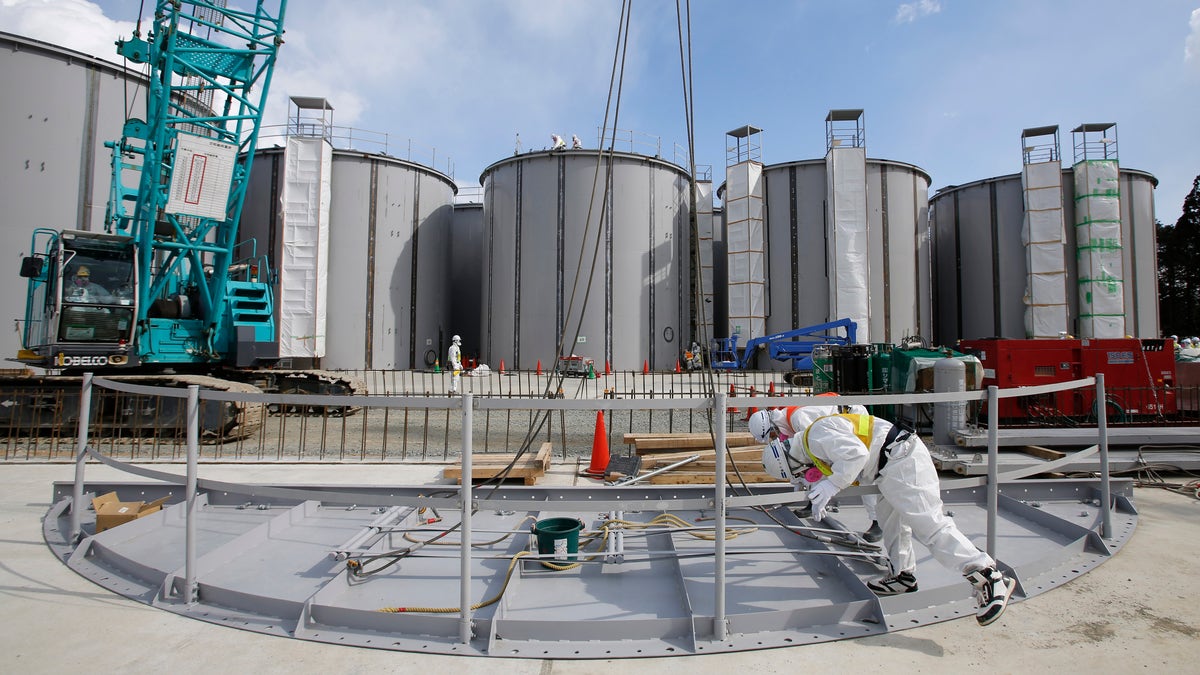
March 10, 2014 - FILE photo of men wearing protective suits and masks work in front of welding storage tanks for radioactive water, under construction at TEPCO's tsunami-crippled Fukushima Daiichi nuclear power plant in Fukushima prefecture, Japan. (REUTERS)
Trouble is looming at Japan’s Fukushima nuclear plant, as a leak has forced the shutdown of a cooling system that could cause temperatures to exceed dangerous levels.
Fukushima operator Tokyo Electric Power Company (TEPCO) was forced to switch off the cooling system at Reactor Unit 5, after engineers discovered it had been leaking water. If the system is not repaired within the next nine days, temperatures are expected to soar, Russian news site RT reported Sunday.
More than 340 gallons of water leaked from the cooling system intended to stabilize the temperature of the spent fuel at Reactor Unit 5. The system was offline but loaded with fuel rods when the plant was damaged by an earthquake and subsequent tsunami in March 2011. That accident caused three of the plant’s six nuclear reactors to meltdown, releasing extensive amounts of radioactive material. It was the largest nuclear accident since Russia’s Chernobyl disaster in 1986.
The source of the leak was apparently a 3-millimeter diameter hole near a flow valve, a TEPCO statement released Sunday said. When the cooling system was turned off at around noon Sunday, the temperature in the pool that holds the rods was about 73 degrees Fahrenheit but started increasing by 0.193 degrees per hour, TEPCO says.
If no new cold water is pumped in at this rate, it will reach the dangerous threshold of 149 degrees (F) in roughly the next week. Such temperatures would increase the possibility of dangerous reactions and more radiation leaks in the plant.
TEPCO says that currently, there have been no abnormal readings anywhere in the plant.
High temperatures have not been routinely seen at the plant since the cooling system failed in the immediate aftermath of the meltdown in 2011.
TEPCO’s use of seawater for many of its cooling needs at the power plant has previously caused heightened levels of corrosion in sensitive equipment. The cooling system at various reactors has also been compromised by other sources, including rats short circuiting the control panel and forcing a blackout, and an employee “accidentally” switching it off. But those problems were fixed before rod pools overheated.
